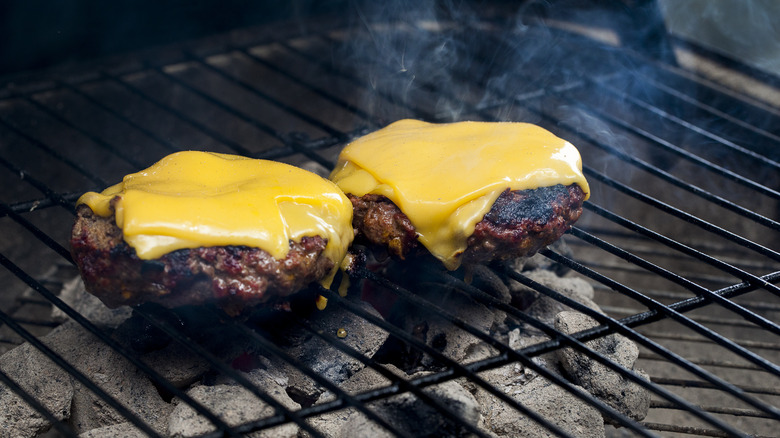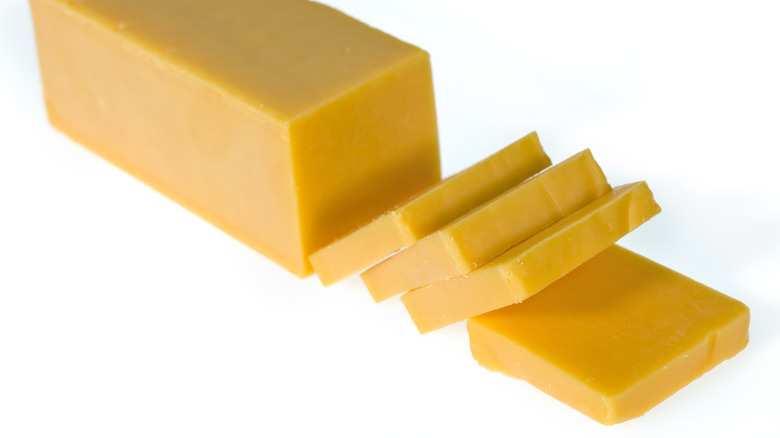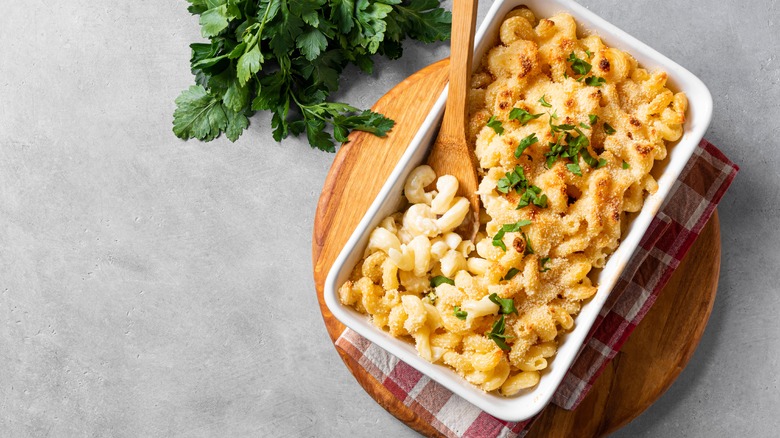In Defense Of American Cheese, The Perfect Choice For Melting
Out of all the popular cheeses in the pre-packaged cheese section, American cheese gets the worst rap. But think about it — out of all the cheeses available to you in a supermarket, which one is going to blanket your burger in a sauce-like cloak, and which of those cheeses are the preferred one for a silky, comforting, grilled cheese? Though cheeses like cheddar are obviously also delicious, the oil in many of them beads out as its heated. This drives moisture out of the final product, which also renders it grainy and makes it way less appealing to eat, especially as it cools. Those properties don't make for a great melting cheese.
People immediately distrust American cheese for being processed (and let's be real, it is!), but the truth is, that processing is what allows it to stay so uniform, and to me, it will always be the cheese of choice on a casual no-frills burger, whether it's a fast food one, or a trendy smashburger. Plus, hey, it's delicious — it's tangy, salty, and sharp, which allows it to stand out in each bite no matter what you put it on. I feel like people knock it a little too much sometimes.
The key ingredient to American cheese
Yes, the main base of American cheese is indeed cheese, of which can be a blend of colby, cheddar, and Swiss, so no, this isn't some wholly artificial product. But the additives can include extra liquid, such as milk, whey, and emulsifiers like sodium phosphate or sodium citrate, which you can actually buy to make your own nacho cheese sauce at home.
These key emulsifiers allow oil and water to bind together, which prevents the oil from separating out when the cheese is melted, and thus gives you that consistent end product, even when it's melted. You might also notice that different brands of American cheese taste different from each other. That's because the base cheeses can vary. So if you find you consistently prefer the taste of one brand of American cheese over another, it could be that you just love the flavor of its base blend over another.
And in terms of nomenclature, you've probably seen that labels on American cheese call it "pasteurized process cheese." That's because the Food and Drug Administration (FDA) has legally defined it as such. It only needs a minimum of 51% actual cheese in it to be called that, and those additions are what prevent it from being called straight-up "cheese." We've just casually grown to call it American cheese because it's been part of our kitchens for so long — and who's got the time to say all those words at once, anyway?
How to use American cheese, other than in sandwiches
There's plenty of uses for American cheese beyond just sandwiches. You can use its uniform melting qualities to make a luxuriously silky macaroni and cheese, and for extremely unconventional things like Altoona's version of pizza, which features a slice of American cheese on top. We know that's a decidedly different take on pizza, but we even tried making Altoona-style pizza at home to see how we felt about it. And frankly, American cheese is actually good by itself, or on a homemade cracker stack with ham, which is a good after-school snack for kids and adults alike — but really, if you need it melted, it's your best friend.
And yes, we're acknowledging the naysayers here as well. If you don't like it, you don't like it, that's cool too. But there's plenty of reasons why it's always in my refrigerator, and when it comes down to it, it's all because it's delicious and arguably more useful than just a standard slice of cheddar in some cases. Besides, there's never a bad time for a perfectly gooey grilled cheese sandwich, and we all know that there's no better cheese for that than American.


